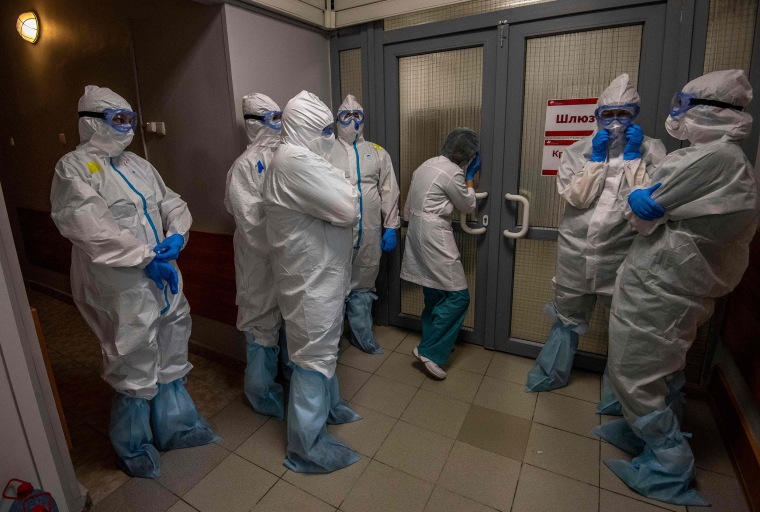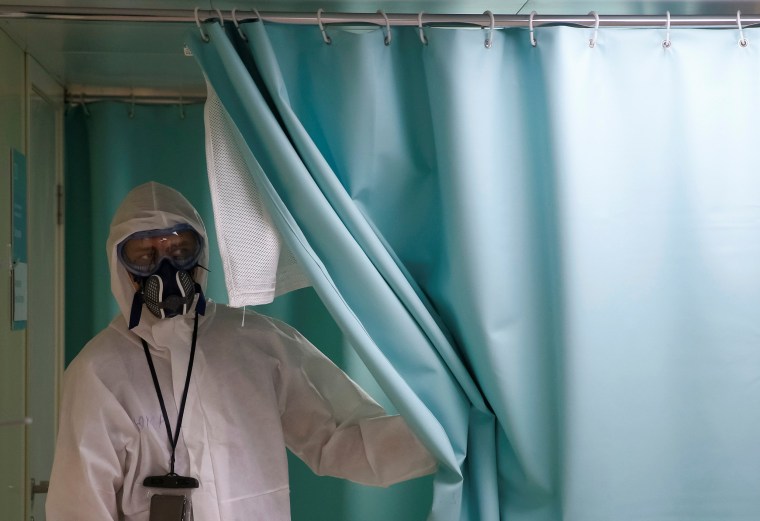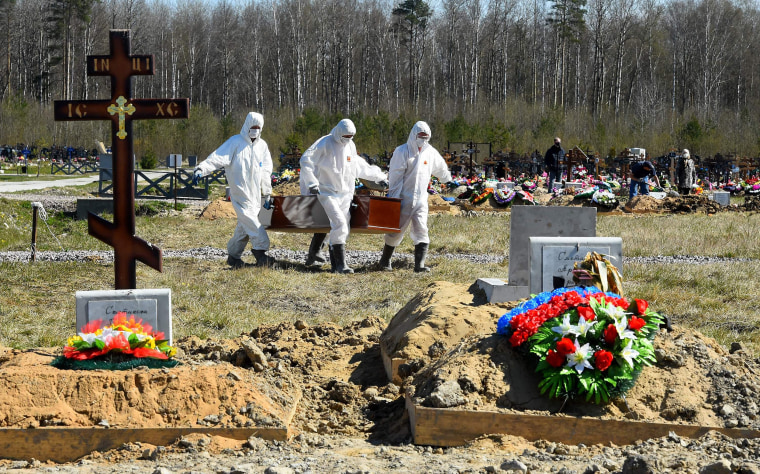MOSCOW — After two Russian doctors fell to their deaths from hospital windows in the past two weeks, the plight of medical professionals battling the coronavirus pandemic has been brought into sharp focus, with more than 100 health care having died since the outbreak began.
While the falls have dominated Russian social media and made headlines around the country, it is not known what was behind them.
But the two cases focused attention on frustrated health care workers who have been raising the alarm over what they say are acute equipment shortages and poor procedures to control hospital outbreaks.
"Our doctors are less well-protected than their counterparts abroad," said Ivan Konovalov, a spokesperson for the Doctors Alliance, an opposition-linked group of medical professionals calling out the lack of protective gear for hospital workers.
"They often do not have respirators, glasses or suits," Konovalov said. "The problem is national. There is not enough protective equipment anywhere."
Full coverage of the coronavirus outbreak
According to a "memorial list" of fallen colleagues updated online by Russian front-line medical personnel, at least 111 health care workers have died in Russia during the pandemic — which, as of Wednesday, has infected over 165,000 people across the country, according to official Russian government statistics.
That is comparable to the death toll in Italy and the U.K., two of the countries worst affected by the outbreak, but in Russia, there is a significant disparity when evaluating such numbers against officially tallied COVID-19-related deaths.

Italy had listed around 18,000 total deaths in early April, when it reported that over 100 health care workers had died. Russia, with 111 health care deaths as of Wednesday, has reported just over 1,500 total deaths.
Such a disparity raises questions about the conditions faced by Russian front-line health care workers, as well as the state's criteria for keeping tabs on coronavirus deaths.
The pandemic is now spreading faster in Russia than in any other country aside from the United States, according to the Russian government's official coronavirus statistics.
The government was initially slow to react, insisting through March that early action — such as closing the border with China and implementing two-week quarantines for foreign arrivals — had prevented a large outbreak.
But by the end of March, as daily case growth reached several hundred, the Kremlin moved to implement a monthlong stay-at-home order.
On April 28, President Vladimir Putin finally admitted that there was a shortage of personal protective equipment like masks for medical personnel and ordered production to continue ramping up.
"We are producing a lot compared to before. But compared to what we need, it is still not enough," Putin said last week when he announced that Russia's lockdown would extend until May 12. "Despite increased production and imports, there is still a deficit of all sorts of things."
Download the NBC News app for full coverage and alerts about the coronavirus outbreak
The reports from the Doctors Alliance about a lack of personal protective equipment comport with separate reports from frustrated medical professionals across the country — some of whom have posted videos online railing against poor working conditions or lack of proper procedures and equipment from hospital administrators and the state.
On Monday, in the city of Omsk, an entire hospital — patients and staff included — was placed under a two-week quarantine after a doctor tested positive for the virus.

A day later, the hospital's chief, Gregory Sobolev, resigned after seeing the hospital's staff lined up in tight formation for a hospitalwide coronavirus test. According to local officials cited by the local news outlet Omsk-Inform, he said he "could not protect his team nor adopt necessary security measures."
Asked about the recent fatal falls, Konovalov said that the Doctors Alliance was saddened that some colleagues were struggling to manage the pressure of responding to the pandemic but that he could not comment on the nature of their deaths.
Working conditions are not dire across the board, however. Dr. Alexander Vanyukov, who gained internet fame early in the crisis with an online appeal for volunteers to assist his hospital, Moscow Hospital 52, said his hospital has everything it needs.
Rather, the difference between Russia and Italy and the U.K. may be in how officials in each country count coronavirus deaths, he told NBC News. The deaths can be counted in several different ways.
"A patient with COVID-induced pneumonia develops a myocardial infarction and dies. We can assume this is a death from COVID, but in fact it is a death from the infarction," Vanyukov said. "Most people with severe concomitant diseases die, and although COVID does not add to their health, they do not always die from it.
"Different countries deal with this differently. This is probably why there is such a difference in the numbers."
